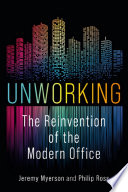

The book 'Unworking' challenges the traditional notions of work and productivity. It posits that the conventional 9-to-5 work structure is outdated and often counterproductive. Instead, it advocates for a more flexible approach to work that prioritizes creativity and well-being. The author argues that by unworking, individuals can tap into their true potential, leading to greater satisfaction and productivity. This idea emphasizes the need for organizations to reassess their work cultures and policies, moving towards environments that foster innovation and allow for personal growth. The concept of unworking encourages individuals to question the status quo, looking beyond mere hours logged to the quality and impact of their contributions.
Continue readingOne of the central themes of 'Unworking' is the importance of flexibility in the workplace. The book details how rigid schedules can stifle creativity and lead to burnout. By allowing employees to choose when and how they work, organizations can create a more motivated and engaged workforce. The author presents case studies of companies that have successfully implemented flexible work arrangements, showcasing how this approach can lead to increased productivity and employee satisfaction. Embracing flexibility is not just about remote work options; it also involves adapting to the diverse needs of employees, whether that means accommodating different working styles or providing a supportive work-life balance.
Continue readingTechnology plays a crucial role in the concept of unworking. The book explores how advancements in technology enable more efficient communication and collaboration, making it easier for individuals to work outside traditional frameworks. Tools like project management software and virtual communication platforms allow teams to stay connected regardless of location. However, the author also warns against the potential downsides of technology, such as the blurring of boundaries between work and personal life. The key takeaway is that while technology can facilitate unworking, it must be used mindfully to enhance rather than detract from overall well-being.
Continue readingA growth mindset is essential for embracing the principles of unworking. The book emphasizes the importance of continuous learning and adaptation in a rapidly changing work environment. By fostering a culture that encourages experimentation and resilience, organizations can empower employees to take ownership of their work and pursue innovative solutions. The author provides practical strategies for developing a growth mindset, such as encouraging feedback, celebrating failures as learning opportunities, and investing in professional development. This idea underscores that unworking is not just about changing structures but also about nurturing the right attitudes and behaviors among employees.
Continue readingThe book highlights the connection between unworking and well-being. It argues that traditional work environments often neglect the mental health of employees, leading to stress and dissatisfaction. By adopting unworking principles, organizations can create a more supportive atmosphere that prioritizes mental health. The author discusses various practices that can enhance well-being at work, such as mindfulness, regular breaks, and creating spaces for relaxation and creativity. This focus on well-being not only benefits employees but also enhances organizational performance, as happier employees are typically more productive and engaged.
Continue readingIn 'Unworking', the author challenges the conventional metrics of success that often equate long hours with achievement. Instead, success should be redefined to include personal fulfillment, creativity, and the impact of one’s work on others. This shift in perspective encourages individuals to pursue careers that align with their values and passions rather than simply chasing promotions or financial gains. The book provides insights into how organizations can support this redefinition of success by recognizing and rewarding diverse contributions and fostering an inclusive culture that values different perspectives and experiences.
Continue readingThe final key idea in 'Unworking' is the emphasis on collaboration rather than competition in the workplace. The author argues that a collaborative environment fosters creativity and innovation, as individuals feel more comfortable sharing ideas and working together towards common goals. The book provides examples of successful collaborative practices and suggests ways to cultivate a team-oriented culture. By shifting the focus from competition to collaboration, organizations can create a more cohesive and productive workforce that leverages the strengths of diverse team members.
Continue reading